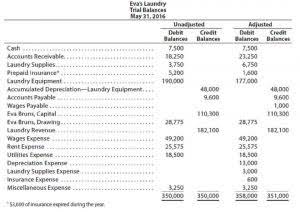
Instead, the old contract is terminated, and a new contract is created in which the new rate will be applied prospectively to the remaining goods yet to be provided to the customer (from the original contract and the extension period). With operations spanning continents, currency fluctuations can dramatically affect reported profits and operational costs. Effective hedging strategies and financial instruments are essential tools to manage this risk.
- In SE, costs are capitalized based on whether the well is successful or not (i.e., hydrocarbons are produced).
- As an intricate discipline, oil and gas accounting plays a pivotal role in valuing assets, managing risks, and supporting sustainable practices in the exploration, extraction, and production of oil and gas resources.
- Understanding the unique terminology and principles in oil and gas accounting is fundamental for anyone involved in the industry.
- In this digital era, relying solely on traditional accounting methods can be a recipe for inefficiency.
- It is important to understand the bottom line for the two of these and how they may affect your financial statements.
- The standard outlines a single comprehensive model for entities to use in accounting for revenue.
- Under ASC 606, entities must recognize interest expense (or revenue) if the contract includes a significant financing component.
Understanding Successful-Efforts and Full-Cost Accounting

Additionally, many jurisdictions offer tax incentives to encourage exploration and development, such as accelerated depreciation, investment tax credits, and deductions for intangible drilling costs. These incentives can significantly impact a company’s financial statements and investment decisions. Oil and gas accounting is a specialized assets = liabilities + equity discipline essential for accurately tracking and reporting financial activities in the oil and gas industry. It ensures transparent financial reporting, compliance with regulations, and strategic decision-making. As an intricate discipline, oil and gas accounting plays a pivotal role in valuing assets, managing risks, and supporting sustainable practices in the exploration, extraction, and production of oil and gas resources.
How do fluctuating oil prices impact revenue recognition?

Some of the indicators that suggest a company is acting as a principal include primary responsibility for fulfilling the contract, inventory or customer credit risk, and pricing power. If the company merely arranges for another entity to provide services, the company is acting as an agent. When acting as an agent, the company recognizes revenue on its commission or fee, if one exists. The total revenue from the contract will equal the “net” amount after paying the principal for the goods or services.
Balance Sheet
DD&A, production expenses, and exploration costs incurred from unsuccessful efforts to discover new reserves are recorded on the income statement. Initially, net income for both an SE and an FC company is impacted by the periodic charges for DD&A and production expenses, but net income https://www.bookstime.com/ for the SE company is further impacted by exploration costs that may have been incurred for that period. In the oil and gas industry, understanding the various types of costs is essential for accurate financial management and reporting. These costs are generally categorized into exploration, development, and production costs, each with its own accounting treatment and implications.

Upstream activities involve exploration and production, midstream covers transportation and storage, while downstream includes refining and marketing. Each segment has its own accounting nuances, making it essential to grasp these differences for accurate financial reporting. Each method will have its own way of demonstrating costs when it comes to cash flow, so it is crucial to understand the methods in depth in order to anticipate what financial statements will look like. This is why it is incredibly important to work with oil and gas accounting a financial team that really understands the oil and gas industry in order to gain a full understanding of the business and its financial health – both short-term and long-term. Another critical aspect of joint venture accounting is the allocation of costs and revenues among the partners. This allocation is usually governed by the joint operating agreement (JOA), which outlines each partner’s share of costs and production.

Oil & Gas Financial Statements – Projecting Revenue and Expenses
Impairment occurs when the carrying amount of an asset exceeds its recoverable amount, necessitating a write-down to reflect the diminished value. This process is governed by accounting standards such as IAS 36, which outlines the procedures for identifying and measuring impairment. Reserve estimation and valuation are fundamental to the oil and gas industry, serving as the bedrock for investment decisions, financial reporting, and strategic planning.
Accurate JIB statements are essential for maintaining transparency and trust among joint venture partners. Companies often employ specialized software like Quorum Joint Venture Accounting or P2 BOLO to manage these complex transactions, ensuring that all parties receive timely and accurate financial information. Joint venture accounting is crucial to accurately reflect each participant’s share of costs, revenues, and other financial aspects. Estimates of reserves for individual properties may not reflect the same level of confidence as estimates of reserves for all properties, due to the effect of aggregation.
Financial Reporting and Transparency
Information is considered material if its omission or misstatement could influence the economic decisions of users. I hinted at this in the last part of the NAV explanation above, but sum of the parts is a very common valuation methodology in the energy industry. You add all those up to arrive at Enterprise Value, then back into Equity Value the normal way, and calculate the company’s Implied Share Price by dividing by the diluted shares outstanding. For example, if the company has undeveloped land or if it has midstream or downstream operations, you might estimate the value of those based on an EBITDA multiple (or $ per acre for land) and add them in. You don’t assume anything for Exploration since you’re pretending that the company finds nothing and dwindles to $0 in the future, and you leave out items like corporate overhead and SG&A because we’re valuing the company on an asset-level.